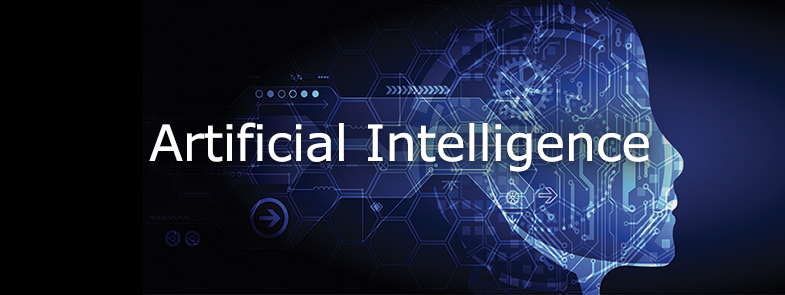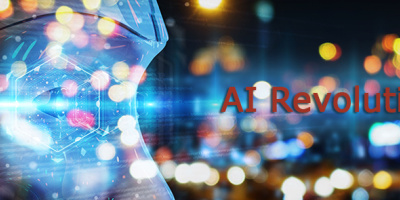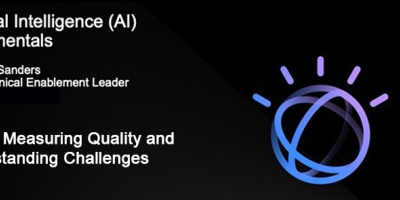Artificial intelligence (AI) has the potential to remove bias from human decision-making. Now try to imagine what our legal systems might look like if augmented with powerful AI capabilities.
If our legal processes and justice systems were infused with advanced artificial intelligence (AI) capabilities, the outcome of some trials might be very different from those that were absent of AI. Some may argue AI might produce more balanced and consistent verdicts by identifying and attempting to remove human prejudice and bias. But that’s just one perspective on AI in the justice system. Consider how the existence of fully autonomous self-aware AI “beings” as part of our society might change our legal systems around the world.
“Not that I’m biased….”
I’ve heard myself say those very words many times. One of the perceived benefits of artificial intelligence (AI) is the potential to reduce or remove bias from decision-making. This is important, as even when training a model, bias can sometimes be encountered in the training data, so it is important that this bias is avoided to help prevent skewing the model’s performance later on.
The Balance and Bias of Legal Systems
When we think of our legal systems, regardless of where we might reside, we hope and like to believe that justice is on the side of the innocent. We put faith in the “jury-based” justice system. Jurors are supposed to be unbiased. In many countries, prosecution and defense teams review potential jurors prior to selection to make sure there is balance of opinion across the jury. However, it is human nature to have bias, and even though many might claim not to have bias, it may be there subconsciously, unintentionally. After all, we are influenced by our upbringing, our belief systems, morals, emotions, culture, political affiliations, life experiences, and many other factors—far too many to mention here.
AI systems have the ability to analyze data across many different disciplines, in different languages. They can analyze sentiment within written and spoken words, observe and identify human expressions, and analyze sound, images, and video. In many cases, this can be performed in real time.
Imagine an AI system being able to ingest all legal cases, in all law books, across all languages and “learn” about all the relevant cases, legal precedents, and outcomes pertinent to a particular trial, while removing emotion and human bias. I ask myself, how might the outcome be different if the jury consisted of AI systems and humans, as opposed to just humans alone? You might be thinking, why not have a jury of just different AI systems—without humans? My view of AI systems in general is that humans and AI together are far better than just AI systems or just humans alone. They both have the potential to help bring balance to each other, thereby augmenting humankind. I’m not going to form any opinions at this point about what the impact (positive or negative) might be for attorneys and judges. As humans, we may believe that we have the right to disregard the analyses and judgments of AI systems to the point of ignoring the facts if it damages our ability to win a case—at least for the foreseeable future. It comes down to trust.
International Legal Systems
We live in, and depend, on a global economy, with global reach and global visibility. The world seems to be becoming a smaller place, offering the ability to travel to seemingly far-away places within 24 hours.
As consumers, we expect to be able to purchase anything (product or service) we desire, no matter where the physical products and fulfilment systems exist. When we place items in our online “cart,” most of that geographic complexity is abstracted for our convenience; we don’t need to know. But If something goes wrong and it impacts us as consumers, how might the legal systems in each of the countries involved in a transaction play a role in resolving—or indeed preventing a solution to—an issue spanning international boundaries?
Similarly, what if a person or an organization needs to be brought to justice due to alleged crimes in other countries?
The International Court of Justice (ICJ), sometimes called the World Court, is the principal judicial organ of the United Nations (UN). The ICJ comprises a panel of 15 judges elected by the General Assembly and Security Council for nine-year terms. The ICJ settles disputes between states and gives advisory opinions on international legal issues referred to it by the UN. Through its opinions and rulings, it serves as a source of international law.
Think of the positive impact an AI system might bring to helping with international disputes and international cases, helping to understand and span international cultures and different legal systems, helping to remove international bias/conflicts of interest, and setting new precedents for international justice…and maybe greater peace.
Civil Rights, Human Rights, Augmented Rights, and AI Rights
It is not inconceivable to see a time when robots will progress from a basic mechanoid depiction to more humanoid representations, with better understanding of humans. I refer to these as “simulans” in a book I was privileged to coauthor (mentioned below). Over time, cognitive elements within an overall AI system will be better at mimicking human reasoning, understanding, and thought processing. Robots like Sophia might soon be able to demonstrate better understanding of human cognitive functions such as reasoning, understanding, and thought to the point of surpassing that of the average human being’s intelligence. It is conceivable that “synthetic” beings as depicted in sci-fi movies could become a reality, existing alongside humans to fight and defend our freedoms and help minimize loss of human life (even being deployed in battle). Given that a robot (Sophia) has already been granted citizenship to one country so far, should that “synthetic being” be protected under a set of laws similar to that for humankind?
You might be thinking about the value of human emotion versus pure logical analyses. Some people may see emotions as just chemical reactions in the human body. That being the case, those chemicals involved in human emotions could be linked to AI systems to develop early prototypes of synthetic or Artificial Emotions (AE) and feelings for humanoid robots. All becomes relevant when we think how to evolve civil, human, and other forms of rights that might not yet exist.
Legal cases involving humans and their use of AI systems will drive our justice and legal systems into uncharted territory, likely resulting in new laws around responsibility, accountability, and ethics. There will be much debate and anxiety, but AI technologies will continue to advance when it can be shown that the benefits (business or otherwise) outweigh the perceived risks. But imagine for moment if a fully automated, self-aware AI system or “being” caused a disaster. Who would be to blame? Would the organization that created the AI “system”/“being” be held responsible or the AI “system” itself?
Certainly, our legal and justice systems would need to adapt to encompass the synthetic being’s rights. What would be society’s reaction as we attempt to adapt to embracing and integrating them? One thing is fairly certain: our legal and justice systems and governments would need to evolve to embrace a whole new kind of diversity, one that would cover AI-based beings/systems.
I see it as inevitable that humans will at some point coexist with other forms of intelligence. Human intelligence might be augmented with “smart” technologies that have the ability to upload new “experiences” and associated experiential data through a neural interface. This begs the question of boundaries. At what point does the AI element of our augmented existence become absorbed into our human and civil rights, or is there a new set of augmented rights that needs to be developed?
In Summary…
In concluding, the potential impact of AI on local, national, and international legal systems could significantly enhance the justice for individuals, communities, organizations, and countries if used in conjunction with human decision-making. However, many hurdles need to be addressed in how AI systems in all their definitions become integrated into our legal systems, our own augmented existence, and synthetic beings and broader society itself. How responsible will humans be yielding this new “power”? We don’t know at this point. What we do know is that the journey to AI, when it comes to legal systems, might be a very long, drawn-out journey requiring a lot of evolution and hopefully not too much revolution.
For more information on this and other AI-related subjects, take a look at Artificial Intelligence: Evolution and Revolution, which I was proud to coauthor.

























 More than ever, there is a demand for IT to deliver innovation. Your IBM i has been an essential part of your business operations for years. However, your organization may struggle to maintain the current system and implement new projects. The thousands of customers we've worked with and surveyed state that expectations regarding the digital footprint and vision of the company are not aligned with the current IT environment.
More than ever, there is a demand for IT to deliver innovation. Your IBM i has been an essential part of your business operations for years. However, your organization may struggle to maintain the current system and implement new projects. The thousands of customers we've worked with and surveyed state that expectations regarding the digital footprint and vision of the company are not aligned with the current IT environment. TRY the one package that solves all your document design and printing challenges on all your platforms. Produce bar code labels, electronic forms, ad hoc reports, and RFID tags – without programming! MarkMagic is the only document design and print solution that combines report writing, WYSIWYG label and forms design, and conditional printing in one integrated product. Make sure your data survives when catastrophe hits. Request your trial now! Request Now.
TRY the one package that solves all your document design and printing challenges on all your platforms. Produce bar code labels, electronic forms, ad hoc reports, and RFID tags – without programming! MarkMagic is the only document design and print solution that combines report writing, WYSIWYG label and forms design, and conditional printing in one integrated product. Make sure your data survives when catastrophe hits. Request your trial now! Request Now. Forms of ransomware has been around for over 30 years, and with more and more organizations suffering attacks each year, it continues to endure. What has made ransomware such a durable threat and what is the best way to combat it? In order to prevent ransomware, organizations must first understand how it works.
Forms of ransomware has been around for over 30 years, and with more and more organizations suffering attacks each year, it continues to endure. What has made ransomware such a durable threat and what is the best way to combat it? In order to prevent ransomware, organizations must first understand how it works. Disaster protection is vital to every business. Yet, it often consists of patched together procedures that are prone to error. From automatic backups to data encryption to media management, Robot automates the routine (yet often complex) tasks of iSeries backup and recovery, saving you time and money and making the process safer and more reliable. Automate your backups with the Robot Backup and Recovery Solution. Key features include:
Disaster protection is vital to every business. Yet, it often consists of patched together procedures that are prone to error. From automatic backups to data encryption to media management, Robot automates the routine (yet often complex) tasks of iSeries backup and recovery, saving you time and money and making the process safer and more reliable. Automate your backups with the Robot Backup and Recovery Solution. Key features include: Business users want new applications now. Market and regulatory pressures require faster application updates and delivery into production. Your IBM i developers may be approaching retirement, and you see no sure way to fill their positions with experienced developers. In addition, you may be caught between maintaining your existing applications and the uncertainty of moving to something new.
Business users want new applications now. Market and regulatory pressures require faster application updates and delivery into production. Your IBM i developers may be approaching retirement, and you see no sure way to fill their positions with experienced developers. In addition, you may be caught between maintaining your existing applications and the uncertainty of moving to something new. IT managers hoping to find new IBM i talent are discovering that the pool of experienced RPG programmers and operators or administrators with intimate knowledge of the operating system and the applications that run on it is small. This begs the question: How will you manage the platform that supports such a big part of your business? This guide offers strategies and software suggestions to help you plan IT staffing and resources and smooth the transition after your AS/400 talent retires. Read on to learn:
IT managers hoping to find new IBM i talent are discovering that the pool of experienced RPG programmers and operators or administrators with intimate knowledge of the operating system and the applications that run on it is small. This begs the question: How will you manage the platform that supports such a big part of your business? This guide offers strategies and software suggestions to help you plan IT staffing and resources and smooth the transition after your AS/400 talent retires. Read on to learn:
LATEST COMMENTS
MC Press Online